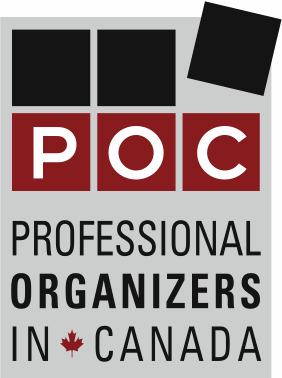If you fall into the latter category, let’s see what we can do to get you in better shape for next year.
If it’s simple, keep it that way. If you are dealing with 8 pieces of paper of less, you can probably get away with putting all your tax slips in one folder or envelope. Label it Taxes. File it at the front of the drawer. (Remember, we don’t want you to put it in alphabetical order and integrate it with the whole filing system. We want this to be simple). As you receive any slip that has to be accounted for in your annual taxes, take it out of the envelope and put in the folder. Done. When you’re ready to prepare your taxes, you pull out that one folder and deal with the few pieces of paper that have accumulated in there over the year. Simple.
But if tax prep is more of a paper chase, we can certainly look at
ways to simplify the flow.
Go electronic. Many companies can notify you of invoice or statement delivery via email. The PDF of that document is all you need to keep as proof, if proof is ever sought. Speak to a representative at your bank, investment firm or utility provider to learn how much information you can access via electronic delivery.
Once you access that electronic document, all you need to do is create an electronic file to save it, and assign a name to the document, so you can find it easily. Be sure to use a consistent naming convention.
Know CRA’s rules. Do you know that you don’t have to keep original paper for everything?
“The Canada Revenue Agency (CRA) accepts records that are produced and kept in:
Go electronic. Many companies can notify you of invoice or statement delivery via email. The PDF of that document is all you need to keep as proof, if proof is ever sought. Speak to a representative at your bank, investment firm or utility provider to learn how much information you can access via electronic delivery.
Once you access that electronic document, all you need to do is create an electronic file to save it, and assign a name to the document, so you can find it easily. Be sure to use a consistent naming convention.
Know CRA’s rules. Do you know that you don’t have to keep original paper for everything?
“The Canada Revenue Agency (CRA) accepts records that are produced and kept in:
- paper format
- paper format, and later converted to and stored in an accessible and readable electronic format
- an accessible and readable electronic format
You have to keep them in an electronic readable format, even if you have paper printouts.”
Make time. If you are one of those who needs to track annual expenses, schedule a couple of hours with yourself each month to input the values you need recorded. The overall process will be more manageable when handled in monthly increments, instead of dealing with a year’s worth of paper just before the filing deadline.
Talk to a professional. Many people are able to handle their taxes without a care in the world. But not everyone has simple accounting needs. For example, a new entrepreneur may be overwhelmed with record keeping and document retention. Even if you think you can handle preparation of your tax return, it might be worthwhile to consult a professional to learn the best way to handle your particular circumstances. It’s better to pay for an hour of time with someone who can guide your correctly, than to forever be struggling and second-guessing yourself.



